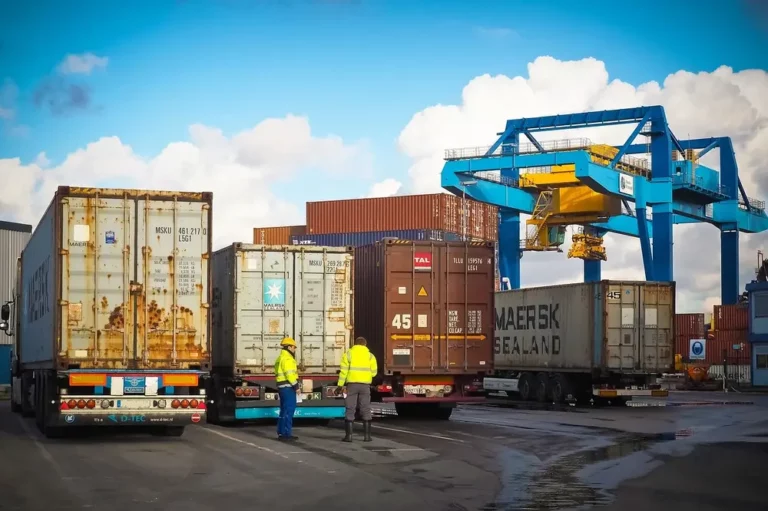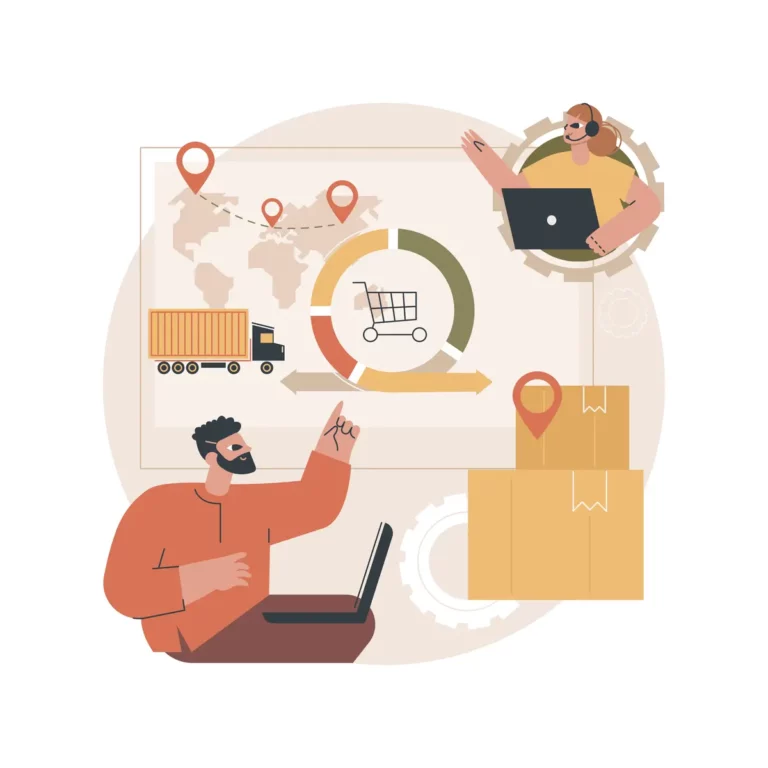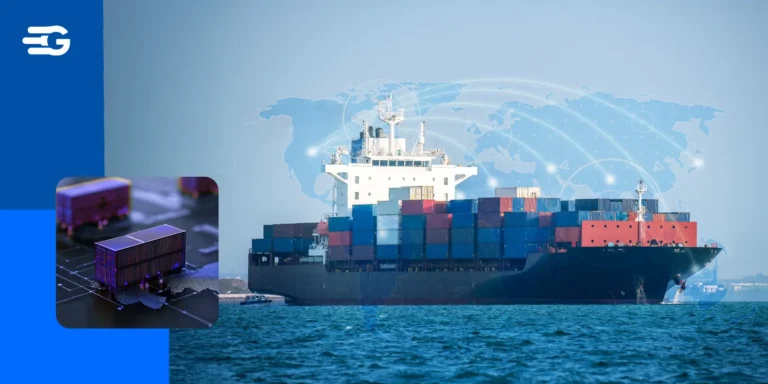The Ultimate Guide to Supply Chain Transparency: Definition, Benefits & How to Achieve It
Table of Contents
Supply chains used to operate behind closed doors. But today, that’s no longer an option. Consumers want to know where their products come from. Regulators demand ethical sourcing. Investors look for sustainability. A transparent supply chain isn’t just good PR, it’s a business necessity.
Companies that embrace transparency build trust, improve efficiency and reduce risks. But achieving it isn’t as simple as flipping a switch. It requires the right strategies, technology, and supplier collaboration.
This guide breaks down what supply chain transparency is, why it matters, and how your business can achieve it.
What is Supply Chain Transparency?
Supply chain transparency means businesses have a clear, real-time view of every stage in their supply chain. It ensures companies know where their products come from, how they are made, and whether ethical and sustainability standards are met. This level of openness helps businesses mitigate risks, improve efficiency, and comply with evolving regulations.
Without transparency, companies operate with blind spots, making them vulnerable to disruptions, unethical sourcing, and compliance issues.
Supply Chain Transparency vs. Visibility vs. Traceability
These terms may seem similar, but they serve different purposes:
- Supply Chain Transparency involves sharing supply chain data with stakeholders, including customers, regulators, and investors.
- Supply Chain Visibility focuses on real-time tracking of goods, inventory, and logistics movements.
- Supply Chain Traceability allows businesses to track a product’s journey from raw materials to the final consumer.
A company can have visibility of its supply chain without being fully transparent. For example, a business may track shipments in real-time but not disclose sourcing details. True transparency goes beyond tracking and makes supply chain information accessible and verifiable.
Also Read: Unlocking the Secrets of Supply Chain Traceability
Why Supply Chain Transparency is More Critical Than Ever
Transparency is no longer a choice. It is a business requirement. Here’s why:
- Regulatory Pressure: Governments are enforcing stricter compliance laws on ethical sourcing, emissions, and labor practices.
- Consumer Expectations: Buyers, both B2B and B2C, expect responsible sourcing and environmental accountability.
- Risk Management: Global disruptions such as pandemics and geopolitical instability have made supply chain resilience essential.
- Competitive Advantage: Companies with transparent supply chains build trust, strengthen brand reputation, and improve supplier relationships.
Businesses that do not embrace transparency risk losing customers, facing legal consequences, and falling behind competitors.
Why Supply Chain Transparency Matters: Business, Ethical, and Consumer Benefits
A transparent supply chain is not just about meeting regulations. It is a strategic advantage that helps businesses cut costs, improve efficiency, build trust, and meet ethical standards.
Business Benefits: Cost Savings, Efficiency, and Risk Mitigation
A well-managed, transparent supply chain allows businesses to reduce inefficiencies, optimize procurement, and improve decision-making.
- Cost savings: Identifying inefficiencies and reducing waste lowers operational expenses.
- Operational efficiency: Real-time insights help streamline logistics, inventory management, and supplier coordination.
- Risk mitigation: Clear visibility into supplier networks reduces exposure to compliance violations, fraud, and disruptions.
When businesses can see and control every part of their supply chain, they can react faster to risks and adapt to changing market conditions.
Ethical Sourcing and Sustainability: The ESG Impact
Sustainability is no longer optional. Governments and investors expect companies to meet Environmental, Social, and Governance (ESG) standards. A transparent supply chain ensures:
- Ethical sourcing: Businesses can verify that suppliers follow fair labor practices and responsible sourcing guidelines.
- Lower carbon footprint: Visibility into transportation, manufacturing, and sourcing helps companies measure and reduce emissions.
- Accountability: Companies that openly share ESG initiatives build stronger relationships with investors and stakeholders.
Transparency and Consumer Trust: How It Affects Purchase Decisions
Customers expect businesses to take responsibility for their supply chains. They want to know where products come from, how they are made, and whether ethical standards are followed.
- Stronger brand credibility: Companies that disclose sourcing and production details gain consumer trust.
- Higher customer loyalty: Shoppers prefer brands that prioritize sustainability, fair labor, and responsible manufacturing.
- Increased demand: Transparency can drive sales, as businesses and consumers actively seek ethical and sustainable products.
A lack of transparency can lead to reputational damage, regulatory fines, and lost business opportunities. Companies that embrace openness build stronger customer relationships and long-term success.
How to Achieve Supply Chain Transparency: A Step-by-Step Framework
Achieving full supply chain transparency requires the right tools, processes, and collaboration. Businesses must understand their supply chain, work closely with suppliers, leverage technology, and ensure compliance with global regulations.
Step 1: Mapping the Supply Chain and Identifying Gaps
Understanding every stage of the supply chain helps businesses identify inefficiencies, detect potential risks, and improve operational control. Without a clear map, blind spots can lead to compliance issues, delays, and unnecessary costs.
Best Tools and Technologies for Mapping
- AI-powered analytics detect inefficiencies and predict disruptions before they happen.
- IoT sensors provide real-time tracking of shipments and inventory.
- Blockchain technology creates an immutable, transparent record of transactions.
Mapping the supply chain gives businesses a complete picture of their operations, helping them make better decisions and reduce risks.
Step 2: Engaging and Collaborating with Suppliers
Transparency starts with suppliers. Companies must ensure their suppliers follow ethical practices and share critical data. Strong supplier relationships lead to better accountability and smoother operations.
Relationship Management Best Practices
- Set clear expectations about ethical sourcing, quality standards, and data sharing.
- Conduct regular audits to ensure compliance with regulations and internal policies.
- Encourage collaboration by using digital platforms for real-time updates and reporting.
When suppliers and businesses work together, transparency becomes a shared responsibility rather than a one-sided demand.
Step 3: Implementing AI and Data for End-to-End Visibility
AI and machine learning turn raw supply chain data into actionable insights. Businesses can track shipments, monitor supplier performance, and automate reporting.
- Predictive analytics help businesses anticipate supply chain disruptions.
- Real-time tracking ensures shipments are delivered on schedule.
- Automated reporting simplifies compliance and performance monitoring.
Using AI and data-driven tools ensures supply chain transparency is continuous and scalable, not just a one-time effort.
Step 4: Ensuring Compliance with Global Regulations
Supply chain transparency is not just about efficiency. Regulatory compliance is critical to avoid legal penalties and reputational damage.
Businesses must adhere to global standards such as:
- EU Corporate Sustainability Reporting Directive (CSRD): Requires companies to disclose environmental and social impact.
- U.S. Uyghur Forced Labor Prevention Act: Bans imports linked to forced labor and unethical sourcing.
Staying ahead of regulations protects businesses from fines, trade restrictions, and reputational risks.
By following these steps, companies can achieve true supply chain transparency, reduce risks, and gain a competitive edge.
Overcoming Common Challenges in Supply Chain Transparency
Achieving full supply chain transparency comes with challenges. Businesses often struggle with fragmented data, supplier reluctance, and high implementation costs. Addressing these obstacles requires the right strategies and technology.
Key Obstacles Companies Face
- Data Silos: Many businesses use disconnected systems, making it difficult to track and share supply chain data in real time.
- Supplier Resistance: Some suppliers hesitate to disclose operational details due to competitive concerns or outdated systems.
- Cost Barriers: Implementing transparency initiatives, such as new software or compliance processes, can be expensive.
Solutions and Best Practices for Seamless Implementation
- Use cloud-based supply chain management platforms to centralize data and improve real-time visibility.
- Incentivize suppliers by demonstrating the benefits of transparency, such as better business opportunities and streamlined operations.
- Implement phased digital transformation to spread out costs and make adoption more manageable.
By addressing these challenges strategically, businesses can create a transparent, efficient, and compliant supply chain without unnecessary disruptions.
Future Trends & Innovations in Supply Chain Transparency
The demand for greater transparency in supply chains is driving rapid innovation.
To explore this shift, in the Beyond Borders podcast, industry leaders discussed emerging trends in logistics and supply chain visibility.
In an episode, Michael Matias examined how technology is reshaping global supply chains, emphasizing the growing need for real-time data and automation.
Adding to the conversation, Gautam Prem Jain, CEO of GoComet, shared his perspective:
“Logistics, especially international logistics, was often invisible to the public, which is why innovation didn’t happen sooner.”
This lack of visibility is changing as innovators like us are helping in paving the way in transforming the logistics industry.
By integrating advanced technologies such as AI and blockchain, businesses can now track, verify, and manage their supply chains with unprecedented accuracy. At the same time, consumer expectations and regulatory requirements are becoming stricter, making transparency a competitive necessity.
How Blockchain & AI Are Transforming Supply Chains
- Blockchain: Creates a secure, tamper-proof record of every transaction, ensuring that supply chain data remains authentic and verifiable. This helps businesses prevent fraud, improve traceability, and meet compliance requirements.
- AI-powered insights: Use predictive analytics to forecast demand, detect inefficiencies, and automate decision-making. AI improves visibility by providing real-time tracking and anomaly detection across the entire supply chain.
Evolving Consumer & Regulatory Expectations
- Consumers are demanding more transparency. Businesses must prove ethical sourcing, sustainability efforts, and fair labor practices to maintain customer trust.
- Regulations are tightening. Governments worldwide are enforcing stricter supply chain laws, such as the EU Corporate Sustainability Reporting Directive (CSRD) and the U.S. Uyghur Forced Labor Prevention Act. Non-compliance can lead to fines, reputational damage, and supply chain disruptions.
Companies that embrace transparency early will stay ahead of regulations, build stronger customer relationships, and gain a competitive advantage.
Conclusion & Next Steps
Supply chain transparency is no longer a choice. It is an essential strategy for businesses that want to stay competitive, compliant, and trusted by customers. Companies that fail to prioritize transparency risk inefficiencies, regulatory penalties, and reputational damage.
Key Takeaways for Businesses & Supply Chain Leaders
- Transparency is a competitive advantage. Businesses that embrace it can reduce risks, improve efficiency, and build stronger customer relationships.
- Technology is the key enabler. AI, blockchain, and real-time tracking tools provide the visibility needed to ensure accountability at every stage of the supply chain.
- Regulatory and ethical compliance is critical. Meeting evolving global standards protects businesses from legal risks while strengthening their sustainability and ESG commitments.
The future of supply chain management is built on trust, data, and collaboration. Companies that take action now will be better positioned for long-term success.
The future of supply chain management is built on trust, data, and collaboration. Companies that take action now will be better positioned for long-term success.






